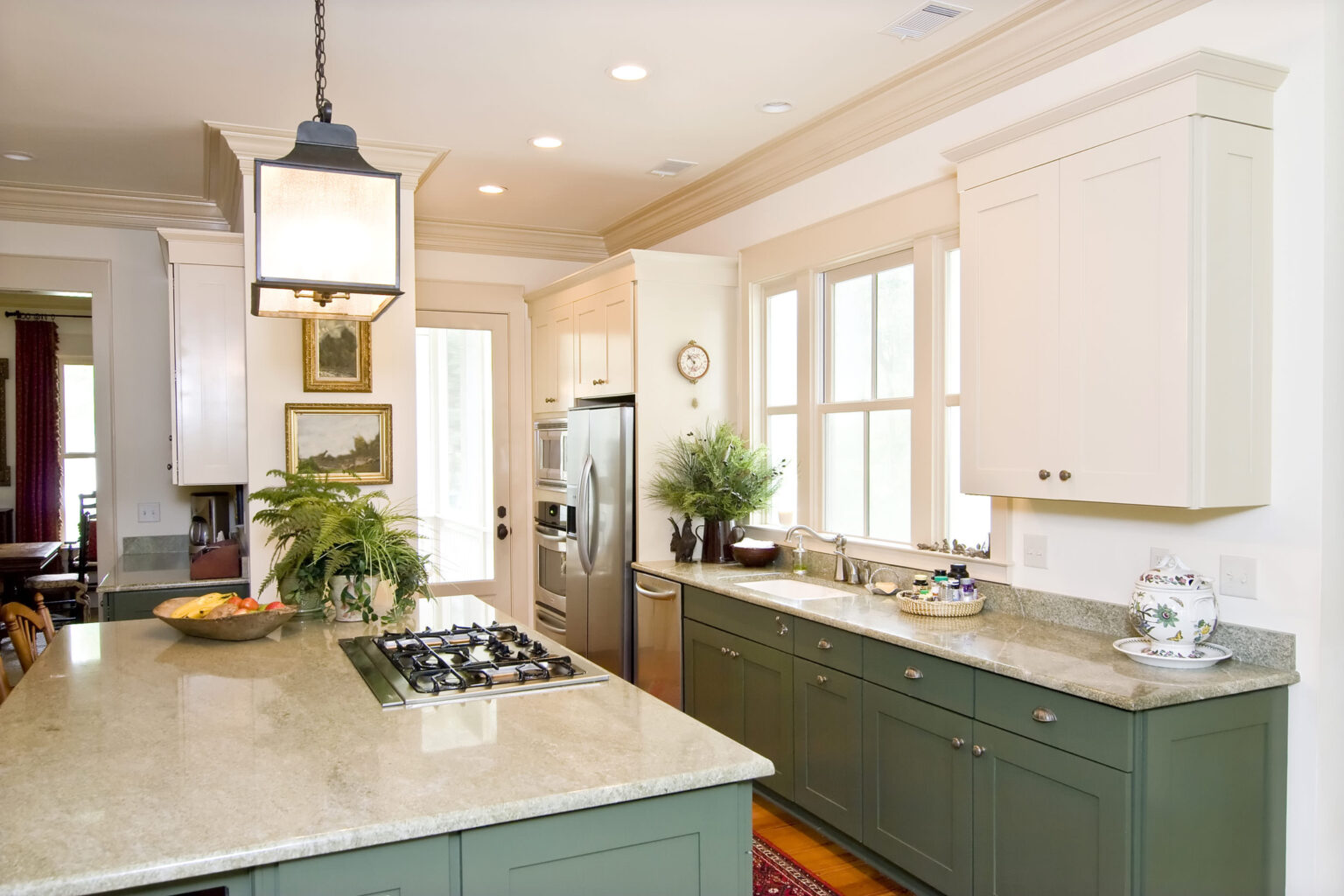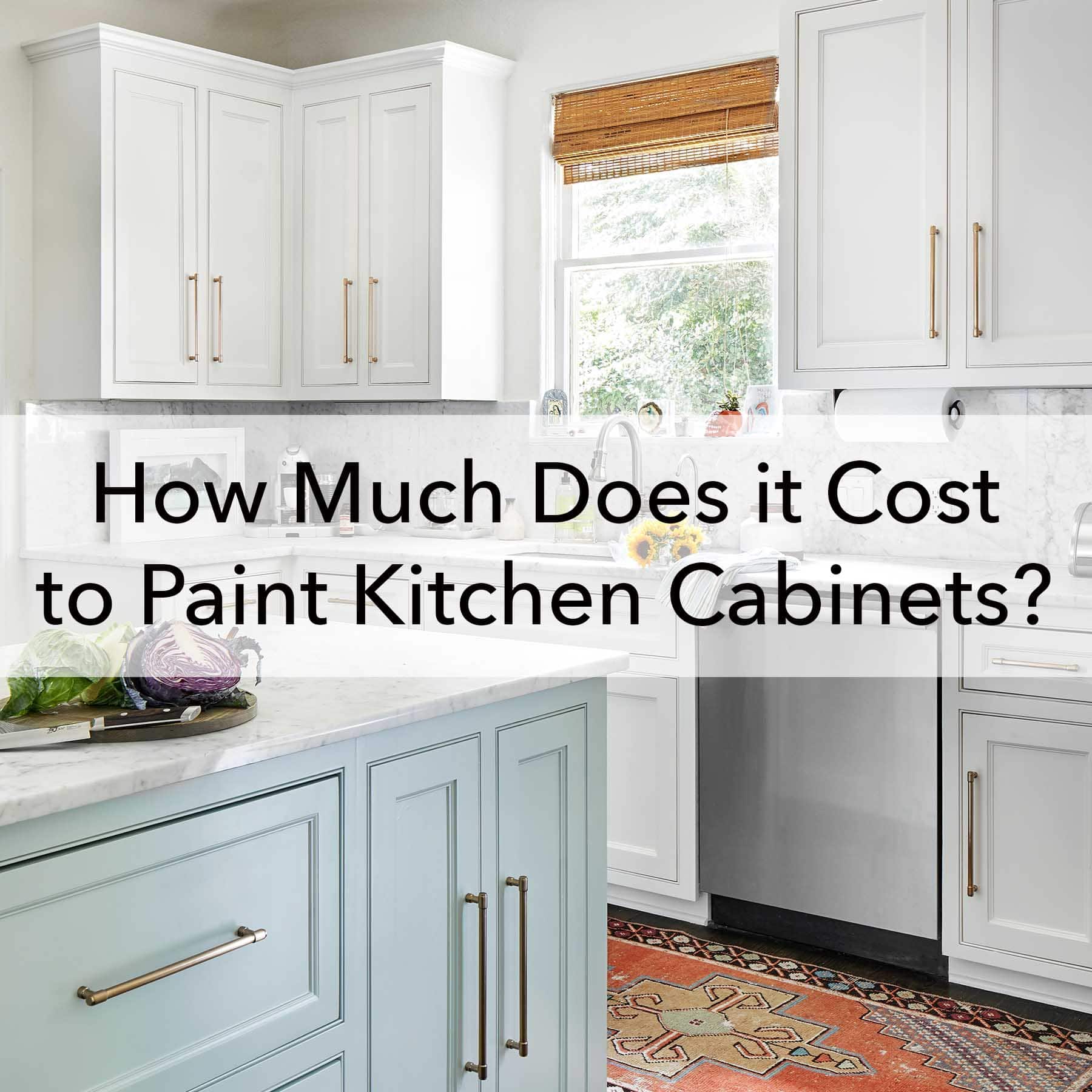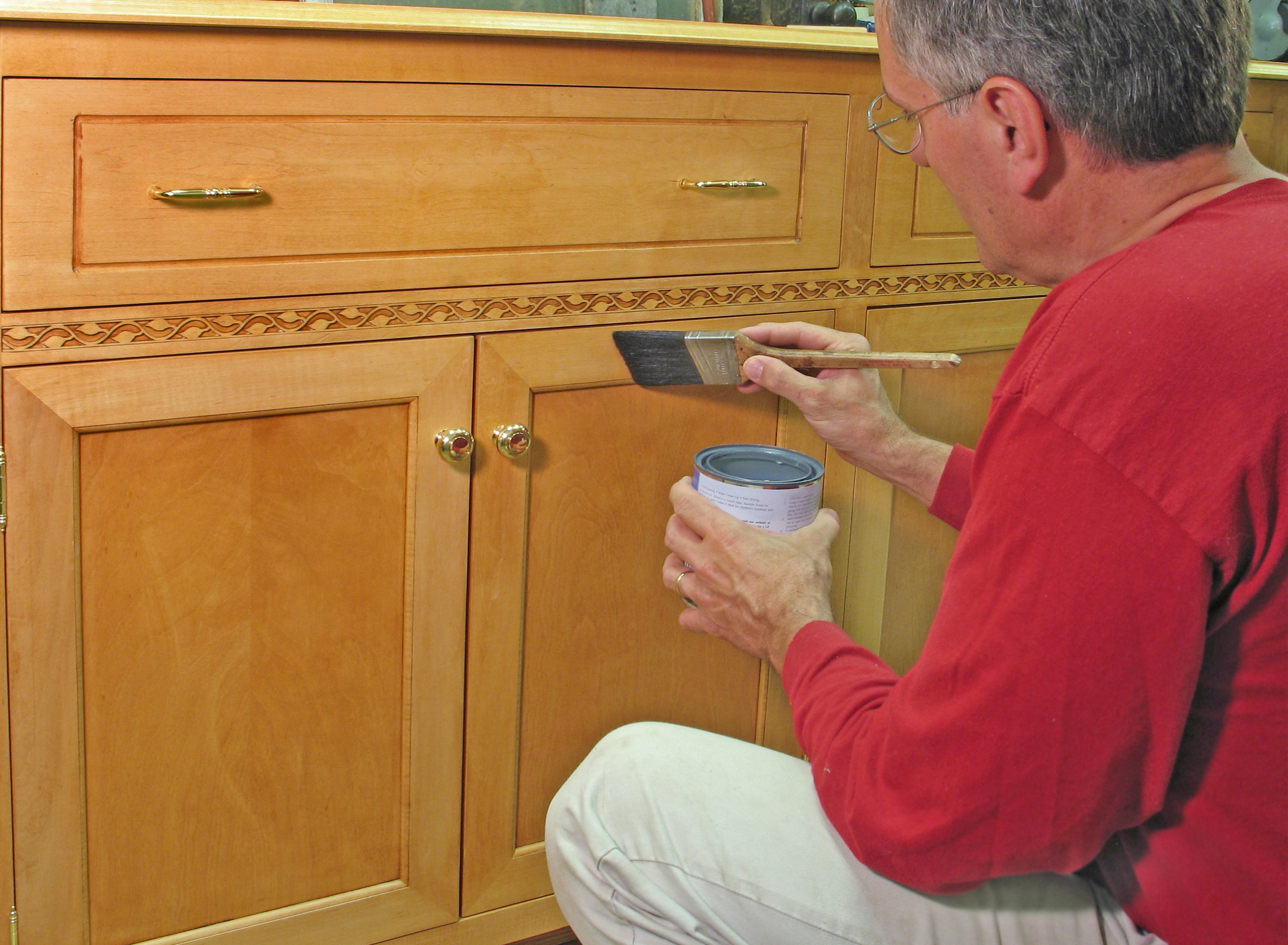Preparation & Planning

Painting kitchen cabinets is a transformative project that can significantly enhance your home’s aesthetic appeal and value. However, achieving a professional-looking finish requires meticulous preparation and planning. This section Artikels the essential steps to ensure a successful and long-lasting paint job. Careful attention to detail in this phase will significantly impact the final result.
Tools and Materials Checklist
A comprehensive list of tools and materials is crucial for a smooth painting process. Having everything readily available minimizes interruptions and ensures efficiency. The quantities provided are estimates for a standard-sized kitchen (approximately 10-15 cabinets); adjust as needed based on your specific kitchen’s size and cabinet configuration.
- Paint: 2-3 gallons of high-quality cabinet paint (choose a finish based on your preference, such as semi-gloss or satin). Consider purchasing a sample size to test the color before committing to a full purchase.
- Primer: 1-2 gallons of primer suitable for your cabinet material (see table below). Priming is crucial for adhesion and color consistency.
- Sandpaper: Assorted grits (120, 180, 220) for smoothing surfaces. Consider purchasing a sanding block for better control.
- Painter’s Tape: Several rolls of high-quality painter’s tape for precise masking.
- Drop Cloths: Sufficient drop cloths to cover floors and countertops completely.
- Brushes and Rollers: High-quality brushes (various sizes) and a mini-roller for detailed areas and larger surfaces. A foam roller is suitable for smooth surfaces, while a microfiber roller may be preferred for a more textured finish.
- Putty Knife: For filling any cracks or imperfections.
- Wood Filler: To fill holes and gaps.
- Tack Cloth: For removing dust and debris after sanding.
- Safety Glasses and Respirator: Essential for protecting your eyes and lungs from dust and paint fumes.
- Cleaning Supplies: Degreaser, rags, and warm water for thorough cleaning.
- Paint Tray and Liner: For easy paint application.
- Screwdrivers: To remove cabinet hardware.
Cabinet Preparation
Thorough preparation is paramount for a flawless paint job. This step involves a systematic approach to cleaning, sanding, and priming the cabinets, ensuring optimal paint adhesion and a durable finish. Neglecting this stage often leads to peeling or chipping paint.
- Remove Hardware: Carefully remove all cabinet knobs, handles, and hinges. Label each piece for easy reinstallation.
- Clean Cabinets: Thoroughly clean the cabinet surfaces using a degreaser to remove any grease, grime, or sticky residue. Rinse with clean water and allow to dry completely.
- Sand Cabinets: Sand the cabinet surfaces with the appropriate grit sandpaper (starting with coarser grit and moving to finer grit). This process smooths out imperfections and creates a better surface for paint adhesion. Focus on areas with imperfections, paying close attention to edges and corners.
- Fill Imperfections: Use wood filler to fill any holes, cracks, or imperfections. Allow to dry completely and then sand smooth.
- Prime Cabinets: Apply a coat of primer suitable for your cabinet material (see table below). Allow the primer to dry completely before proceeding to painting.
Importance of Proper Surface Preparation
Skipping any of the preparation steps can significantly compromise the longevity and appearance of your paint job. Improper cleaning can lead to poor adhesion, resulting in peeling paint. Insufficient sanding can leave a rough surface that shows through the paint. Failure to prime can result in uneven color and reduced paint durability. Investing time in thorough preparation is an investment in a high-quality, long-lasting finish. The consequences of neglecting preparation can range from unsightly imperfections to costly repainting.
Primer Selection Guide
| Primer Type | Suitable for | Advantages | Disadvantages |
|---|---|---|---|
| Oil-based primer | Most cabinet materials, especially wood | Excellent adhesion, blocks stains | Strong odor, longer drying time |
| Water-based primer | Most cabinet materials, including wood and MDF | Low odor, fast drying time, easy cleanup | May require multiple coats for optimal coverage |
| Shellac-based primer | Wood cabinets with knots or stains | Excellent stain blocking properties | Can be more expensive, requires specific cleaning solvents |
Painting Techniques & Methods: Paint Kitchen Cabinets Like A Pro

Achieving a professional-looking finish on your kitchen cabinets requires careful consideration of painting techniques and methods. The choice of application method significantly impacts the final result, influencing both the aesthetic appeal and the longevity of the paint job. Understanding the strengths and weaknesses of each approach is crucial for success.
Paint Application Methods Comparison
The selection of the right painting method depends on several factors, including the size of the project, the desired finish, and your skill level. Below is a comparison of common methods used for painting kitchen cabinets.
| Method | Advantages | Disadvantages | Best Use Cases |
|---|---|---|---|
| Brush | Precise control, excellent for detail work, suitable for all types of paint, relatively inexpensive. | Labor-intensive, can leave brush strokes if not applied correctly, slower than other methods. | Detailed trim work, corners, edges, smaller cabinets, achieving a textured or distressed look. |
| Roller | Faster coverage than brushes, good for large, flat surfaces, relatively inexpensive. | Can leave roller marks if not used properly, less precise control than brushes, may not reach into tight corners effectively. | Large cabinet doors and panels, achieving a smooth finish with the right technique and nap. |
| Sprayer | Fastest application method, produces a very smooth, even finish, ideal for large projects. | Requires more preparation (masking, drop cloths), can be messy if not used properly, more expensive equipment investment, potential for overspray. | Large-scale projects, achieving a factory-like finish, painting multiple cabinets efficiently. |
Brushstroke Techniques for a Smooth Finish
Proper brushstrokes are paramount to achieving a professional paint finish. Avoid visible brush marks by employing a consistent, overlapping technique.
Imagine painting a cabinet door. Load the brush with paint, ensuring it’s not overloaded. Begin applying paint in smooth, even strokes, slightly overlapping each stroke by about 50%. Maintain a consistent pressure and angle. For vertical surfaces, use vertical strokes. For horizontal surfaces, use horizontal strokes. Always work in the same direction to avoid visible lap marks. Avoid going back over already-painted areas unless absolutely necessary. The key is to blend each stroke seamlessly into the next. For edges and corners, use smaller brushes for precision.
Expert Tips for a Professional Finish, Paint kitchen cabinets like a pro
Careful attention to detail is key to achieving a flawless finish. Here are some tips for tackling challenging areas and ensuring a professional result:
- Proper Surface Preparation: Thorough sanding and cleaning are crucial. This ensures good paint adhesion and a smooth finish.
- Thin Coats are Best: Apply multiple thin coats instead of one thick coat. This reduces the risk of drips, runs, and brush marks, and allows for better drying time.
- Use High-Quality Paint and Primer: Invest in a good quality paint and primer designed for cabinets. This will improve the final finish and its durability.
- Tackle Tricky Areas First: Paint corners, edges, and detailed areas before tackling larger surfaces. This allows you to focus on precision and avoid disrupting already-painted areas.
- Use Painter’s Tape Strategically: Apply painter’s tape carefully to protect areas you don’t want to paint, ensuring a clean line. Remove the tape while the paint is still slightly wet to avoid pulling up the paint.
- Maintain a Wet Edge: While painting, try to maintain a wet edge to prevent lap marks. This means keeping the previously applied paint wet as you continue painting.
- Allow Sufficient Drying Time: Always allow ample drying time between coats to ensure proper adhesion and prevent issues with the next coat.
Advanced Techniques & Troubleshooting

Painting kitchen cabinets, even with careful preparation, can present challenges. Understanding common problems and employing advanced techniques is crucial for achieving a professional finish. This section addresses troubleshooting common issues and provides guidance on repainting previously painted cabinets and selecting the appropriate paint.
Common Painting Problems and Solutions
Addressing common painting problems ensures a flawless finish. Careful attention to detail during each stage of the painting process minimizes the likelihood of these issues. However, knowing how to rectify them is equally important.
- Problem: Drips and Runs. Drips and runs are often caused by applying paint too thickly or working in excessively hot or humid conditions. Solution: Use a high-quality paint with good leveling properties. Apply thin, even coats, allowing each coat to dry completely before applying the next. Work in a well-ventilated area with consistent temperature and humidity.
- Problem: Uneven Coverage. Uneven coverage may result from inadequate surface preparation, using a low-quality paint, or applying insufficient coats. Solution: Ensure the cabinets are properly cleaned, sanded, and primed. Use a paint with good hiding power, and apply multiple thin coats for optimal coverage. Consider using a sprayer for a more even finish, especially on large surface areas.
- Problem: Brush Marks. Visible brush strokes indicate improper brushing techniques or the use of a low-quality brush. Solution: Use a high-quality brush with soft bristles. Apply paint using smooth, even strokes, working in the same direction. Consider using a roller for larger surfaces, then using a brush to blend in the edges.
- Problem: Dust and Debris. Dust and debris can settle on the wet paint, resulting in a rough, uneven surface. Solution: Work in a clean, dust-free environment. Use a tack cloth to remove any dust before applying paint. Consider using a paint sprayer to minimize the likelihood of dust settling on the surface.
Repainting Previously Painted Cabinets
Repainting previously painted cabinets requires additional steps to ensure proper adhesion and a long-lasting finish. Failing to properly prepare the surface can lead to peeling or chipping of the new paint.
Paint kitchen cabinets like a pro – The process begins with thorough cleaning to remove grease and grime. Next, lightly sand the existing paint to create a slightly rough surface for better adhesion. Any damaged areas should be repaired and sanded smooth. Then, apply a bonding primer to ensure the new paint adheres properly. Finally, paint the cabinets using the chosen paint and techniques described earlier. If the old paint is severely chipped or peeling, complete removal may be necessary before priming and repainting.
Choosing the Right Paint Type and Sheen
The selection of paint type and sheen significantly impacts the durability, cleanability, and aesthetic appeal of your kitchen cabinets. Consider these factors when making your choice.
| Paint Type | Sheen | Durability | Cleanability |
|---|---|---|---|
| Acrylic Latex | Satin | High | Easy |
| Acrylic Latex | Semi-gloss | Very High | Very Easy |
| Oil-based Alkyd | High-gloss | Very High | Easy |
| Acrylic Latex | Eggshell | Medium | Medium |
